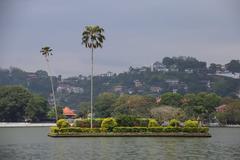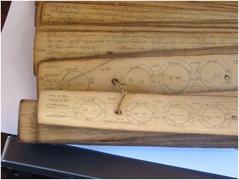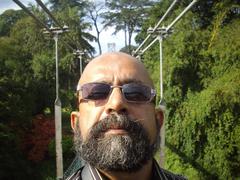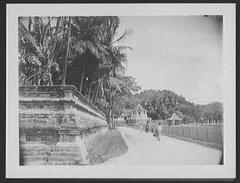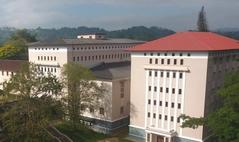
Ceylon Tea Museum Kandy: Visiting Hours, Tickets, and Guide to Historical Sites in Sri Lanka
Date: 04/07/2025
Introduction
Nestled amidst the lush Hanthana mountain range just south of Kandy, the Ceylon Tea Museum is a vibrant gateway to Sri Lanka’s iconic tea heritage. Housed in the meticulously restored 1925 Hantane Tea Factory, the museum chronicles the journey of Ceylon tea from its colonial beginnings to its present-day status as a global export powerhouse. With immersive exhibits, guided tours, and authentic tea tastings overlooking scenic hills, the museum offers a comprehensive experience for tea lovers, cultural explorers, and history enthusiasts alike. This guide provides all the practical information you need—visiting hours, ticketing, tours, and must-see nearby attractions—to plan an enriching visit to the Ceylon Tea Museum and explore the historic heart of Kandy (Hidden Visit, Travel Map Sri Lanka, Amazing Lanka).
Table of Contents
- Introduction
- History and Cultural Significance
- The Ceylon Tea Museum Experience
- Visitor Information
- Nearby Attractions and Kandy Historical Sites
- Practical Travel Tips
- Frequently Asked Questions (FAQ)
- Conclusion and Call to Action
History and Cultural Significance
The Origins and Global Rise of Ceylon Tea
Ceylon tea’s roots are deeply entwined with Sri Lanka’s colonial history. Following the devastation of the island’s coffee industry by a fungal disease in the late 1860s, Scottish planter James Taylor established Sri Lanka’s first commercial tea plantation in 1867 at Loolecondera Estate near Kandy (srilankatravelpages.com). This marked the birth of the Ceylon tea industry, which quickly expanded across the central highlands, thanks to the region’s cool climate and fertile soils. By the late 19th century, Ceylon tea had gained international acclaim, with exports reaching London by 1875 and the number of tea estates rapidly multiplying (readyfortea.com, drinkstype.com).
Economic and Cultural Impact
Tea transformed Sri Lanka’s economy, becoming a leading export and a major source of employment, especially in the hill country. By 1965, Sri Lanka was the world’s top tea exporter, and Ceylon tea remains a cornerstone of the nation’s economy today (readyfortea.com). Socially, tea is woven into daily rituals, ceremonies, and hospitality, symbolizing good fortune and well-being (drinkstype.com).
Preservation of Tea Heritage
The Hanthana Tea Factory, constructed in 1925, was among the earliest factories to adapt to the shift from coffee to tea. To prevent the loss of historic machinery and knowledge, the factory was transformed into the Ceylon Tea Museum in the 1990s, with restoration efforts championed by former industry leaders and the Sri Lanka Tea Board (amazinglanka.com, srilankateaboard.lk). Today, the museum stands as a living tribute to the pioneers who shaped Sri Lanka’s tea legacy.
Symbol of National Identity
Ceylon tea is more than a beverage—it is an enduring symbol of Sri Lankan culture and pride. The museum’s exhibits explore tea traditions, rituals, and the ways tea continues to unite communities and represent national identity (Hidden Visit).
The Ceylon Tea Museum Experience
Museum Layout and Exhibits
The museum occupies four floors, each offering a distinctive aspect of tea history (holidify.com):
- Ground & Second Floors: Antique tea-processing machinery—such as the “Little Giant” tea roller (1889), hand-operated rollers, and century-old dryers—highlight technological advancements.
- First Floor: A library and auditorium provide access to historical documents, books, and scheduled audio-visual presentations.
- Third Floor: A tea shop offers certified Ceylon teas and branded souvenirs.
- Top Floor: A tearoom and terrace with panoramic views of Kandy and the Hanthana hills, complete with a telescope for scenic observation.
Guided Tours and Tea Tastings
Expert-led guided tours, available in English and Sinhala, offer in-depth commentary on exhibits and the tea-making process. Complimentary tea tastings in the tearoom introduce visitors to the nuances of Ceylon tea varieties, with occasional guided tasting sessions for a deeper experience (Hidden Visit).
Tea Shop and Souvenirs
The museum’s tea shop features an extensive selection of loose-leaf teas, curated gift sets, and tea accessories. All products are certified by the Sri Lanka Tea Board, ensuring authenticity and quality.
Tearoom and Panoramic Views
Relax in the tearoom with a cup of freshly brewed Ceylon tea while enjoying sweeping vistas of the surrounding mountains—a perfect way to conclude your visit.
Visitor Information
Location and Accessibility
- Address: No. 75, Tapodarama Mawatha, Hantana, Kandy (approx. 3–4 km south of Kandy city center).
- Transport: Best reached by car, taxi, or tuk-tuk via Hantana Road. Limited public transport is available.
- Parking: Ample parking space for cars and coaches.
- Accessibility: Ramps and an elevator are available; visitors with mobility challenges are advised to call ahead for details.
Visiting Hours
- Open: Tuesday to Sunday, 8:30 AM – 4:00 PM
- Closed: Mondays; last entry recommended 1.5 hours before closing
- Note: On Sundays and public holidays, the museum closes at 3:00 PM.
Ticket Prices (as of July 2025)
- Non-resident Adults: 800 LKR
- Non-resident Children: 400 LKR
- Local rates may vary; check the official website for the latest updates.
Facilities and Amenities
- Restrooms
- Library and auditorium
- Gift and tea shop
- Tearoom/restaurant
- Guided tours
- Free parking
Nearby Attractions and Kandy Historical Sites
- Temple of the Sacred Tooth Relic: Sri Lanka’s most revered Buddhist site
- Kandy Lake: A tranquil spot for walking and birdwatching
- Peradeniya Botanical Gardens: Home to 4,000+ plant species
- International Buddhist Museum: Chronicles Buddhism’s global spread
- Bahirawakanda Vihara Buddha Statue: Panoramic city views
- Kandy Garrison Cemetery: A well-preserved colonial cemetery
- Udawatta Kele Sanctuary: Urban forest for hiking and wildlife
- Royal Palace of Kandy: Historic royal residence
- Kandy Cultural Show: Experience traditional dance and music
- Hanthana Mountain Range: Popular for hiking and birdwatching
- Nearby Temples: Embekka Devalaya, Gadaladeniya, and Lankatilaka, renowned for architecture and history
Practical Travel Tips
- Transport: Tuk-tuks and taxis are best for city travel; consider a private car for day trips.
- Weather: The area is mild but can be rainy; pack an umbrella.
- Festivals: Plan around the Kandy Esala Perahera (June–July) for a unique cultural experience, but expect crowds.
- Dining: Try the museum café for tea-infused dishes and scenic views.
Frequently Asked Questions (FAQ)
Q: What are the Ceylon Tea Museum visiting hours?
A: Tuesday to Sunday, 8:30 AM–4:00 PM. Closed Mondays. On Sundays/public holidays, closes at 3:00 PM.
Q: How much are tickets?
A: Non-resident adults: 800 LKR; children: 400 LKR. Local rates vary.
Q: Are guided tours available?
A: Yes, in English and Sinhala.
Q: Is the museum accessible for wheelchair users?
A: The museum has ramps and an elevator. Contact the museum ahead for details.
Q: Can I buy authentic Ceylon tea?
A: Yes, the museum shop offers certified teas and souvenirs.
Q: Is photography allowed?
A: Yes, except where restricted by signage.
Visuals and Media Recommendations
- Use high-quality images with alt text, such as: “Ceylon Tea Museum entrance,” “Antique tea machinery,” “Panoramic view from Tea Café.”
- Embed a map showing the museum’s location relative to central Kandy and other attractions.
- Offer virtual tour links if available.
Internal Links Suggestions
Conclusion and Call to Action
The Ceylon Tea Museum is an essential stop for anyone eager to delve into the storied past and vibrant present of Sri Lanka’s tea industry. With engaging displays, insightful guided tours, and stunning views, it offers both education and delight. Spend 1.5 to 2 hours exploring the museum, then venture into Kandy’s historic and natural attractions for a rewarding cultural journey. For up-to-date information on visiting hours, ticketing, and special events, consult official channels and download the Audiala app for curated guides and travel tips.
Plan your visit today and immerse yourself in the captivating world of Ceylon tea—a journey that educates, inspires, and delights.
References and Useful Links
- Amazing Lanka: Hanthana Tea Museum
- Hidden Visit: Ceylon Tea Museum Kandy
- Travel Map Sri Lanka: Ceylon Tea Museum
- Kandy City: Ceylon Tea Museum
- Ready for Tea: The History of Ceylon Tea
- Drinks Type: History and Cultural Significance of Ceylon Tea
- Sri Lanka Tea Board: Ceylon Tea Museum
- Sri Lankan Guide: Ceylon Tea Museum
- Love Ceylon Tea: Ceylon Tea Industry Contributor to GDP
- Vivonta Strategic Plan 2025-2027
- Lanka News Web: Tea Industry Prospects 2025
- Green Growth Asia: Sustainability in Sri Lanka’s Tea Industry
- Holidify: Ceylon Tea Museum Sightseeing

